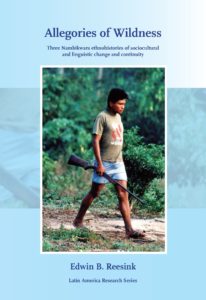Trump’s 2020 Budget Rewards The Wealthiest Individuals

Gerald Epstein is Professor of Economics and a founding Co-Director of the Political Economy Research Institute (PERI) at the University of Massachusetts, Amherst.
Donald Trump’s 2020 budget proposal represents the wildest version of neoliberalism yet. It is just the latest evidence that the United States has become a plutocracy run by an oligarchical elite bent on destroying the last vestiges of a democratic polity.
Trump’s fiscal budget proposal threatens to exacerbate all of the major problems facing the U.S. economy and society today “in order to fund more goodies for the wealthy,” according to radical political economist Gerald Epstein. In this interview with Truthout, Epstein — the co-director of the Political Economy Research Institute and a professor of economics at the University of Massachusetts at Amherst — discusses why the Trump budget proposal is a blatant power grab, why we need to think about economics beyond GDP growth, and why the U.S. government is incurring more debt that does not even begin to address the problems the country faces.
C.J. Polychroniou: Trump’s fiscal 2020 budget proposal, which has been quite fittingly proposed by some critics as “a budget for a sick and declining America,” includes major cuts across all programs and agencies with the exception of the military, which receives additional increases for defense spending. In your view, what’s the logic driving this budget proposal, and what would be the likely consequences for U.S. society and economy if it were to be implemented?
Gerald Epstein: Let me start with the latter part of your question by saying that, if Trump’s fiscal 2020 budget proposal were to be implemented, the consequences would be simply disastrous. Indeed, the Center on Budget and Policy Priorities (CBPP), a reliable source of information on federal budget and tax policy, has catalogued the “little shop of horrors” that make up Trump’s budget. As you indicated, the budget proposes deep cuts in non-defense discretionary spending (NDD) alongside sizeable increases in military spending. The Trump budget proposes cutting the NDD funding by 11 percent after adjusting for inflation. But the overall cuts on key social programs would be even greater than this, because the Trump budget protects or even increases some categories of NDD. As the CPBB says, the budget proposal increases discretionary funding for Homeland Security by 15 percent, while cutting funding for Health and Human services by 12 percent, Housing and Urban Development by 18 percent and the Environmental Protection Agency by a whopping 31 percent. The budget calls for even deeper cuts in the years after 2020; for example, in 2029, it would lower NDD by about 40 percent below current funding in 2019 adjusted for inflation. The budget would take away medical insurance from millions of people by repealing the Affordable Care Act and making deep cuts to Medicaid. It would also cut many other programs for the poor, including food stamps and housing assistance. Trump proposes all this in order to fund more goodies for the wealthy. According to the CBPP, the budget would extend the 2017 tax breaks for rich individuals, making the very rich and the military industries the major beneficiaries of the budget proposal. Read more
Workplace Surveillance Is Central To Capitalist Exploitation
Surveillance of employees in the workplace through the use of advanced technology represents the latest phase in the long history of capitalism to maintain control of workers and to increase productivity through intensified forms of exploitation. Is surveillance capitalism an updated version of Big Brother or something even more sinister? Does it really increase productivity? Are workers accepting of surveillance? And how do we ensure that surveillance capitalism does not completely wipe out privacy and individual rights? In this exclusive Truthout interview, Ivan Manokha, a lecturer at Oxford University and a leading scholar in surveillance studies, offers penetrating insights into the above questions.
C.J. Polychroniou: In the age of flexible capitalism, surveillance technologies have become extremely widespread among advanced capitalist societies, with as yet unclear implications. In your view, what is the primary aim and function of the new spying and surveillance technologies?
Ivan Manokha: The key distinguishing feature of capitalism is the existence of a labor market, i.e. in capitalism human labor is commodified — it is bought and sold in a market place. From the point of view of employers, purchasing labor represents a production cost, and their objective is to make sure that it is utilized to the maximum of its productive potential. This, in turn, requires surveillance and it may be observed that capitalism as a socioeconomic system has always involved workplace surveillance for this reason.
It is actually misleading to use the term “surveillance capitalism” following, in particular, the work of Shoshana Zuboff, now widely employed to refer to the current phase of capitalism with new — digital and biometric — technologies entering the workplace. Capitalism has always been “surveillance capitalism” because in this system the main objective of any business activity is to maximize profits — to make sure that the resources purchased and employed — including labor — are used with the maximum efficiency.
The function of new technologies, as this has always been the case with respect to workplace surveillance, is to seek to maximize worker productivity. This may be achieved in two ways: by extending the amount of time that employees work (e.g. by reducing the duration of breaks, by extending hours of work in the workplace or encouraging employees to work from home after the end of the working day, etc.), or by intensifying the labor process (the speed with which workers move, the number of tasks they complete per unit of times, etc.).
Modern workplace surveillance technologies have the potential to enable employers to do both: to monitor more precisely and continuously the time employees spend to actually work, including the timing of lunch and toilet breaks, as well as to better scrutinize and measure their performance (continuously measuring output, developing performance scoring systems and rankings, etc.).
Here a special mention needs to be made of the so-called “platform labor” — the rise of different digital platforms that bring together clients and “independent contractors,” the euphemism platforms use to refer to their laborers and service providers. They do not know their workers and have to rely on various indicators of performance to measure and compare their productivity, and the central role here is played by customers who perform the role of proxy managers — they evaluate and rank the performance of workers (e.g. of Uber drivers, of cleaners of TaskRabbit, etc.). In short, new workplace surveillance technology is used to improve the capacity of employers to monitor employees, something that they have always done. Read more
Carl Cederström ~ Ons geluksideaal – Een nieuwe blik op een versleten idee
Carl Cederström, auteur van The Wellness Syndrome en ‘Desperately Seeking Self-Improvement’ onderzoekt in Ons Geluksideaal – Een nieuwe blik op een versleten idee onze opvattingen van geluk. Hij omschrijft het geluksideaal als een expressie van wat mensen wensen en verlangen als het gaat om het goede leven.
Het geluksideaal bereikte zijn hoogtepunt in de jaren zestig met de Oostenrijkse psychoanalyticus Wilhelm Reich en zijn onconventionele interpretatie van seksuele driften. Reich combineerde de eis om authentiek te zijn met de voorwaarde van seksueel genot: het ideaal van seksuele en existentiële bevrijding. Het ideaal dat dat het rijke Westen nu al bijna een eeuw beheerst zijn weliswaar geworteld in het begin van de twintigste-eeuwse Europese psychiatrie, en de tegencultuur van de jaren dertig, maar leidt alleen tot de huidige hedonistische consumentencultuur. Authenticiteit, genot, narcisme en zelfontplooiing vormen het hart van dit geluksideaal, en voor ons geluk zijn we zelf verantwoordelijk.
Multinationals en reclamebureaus dringen ons levens op die steeds meer onbevredigend, onzeker en narcistisch zijn. Zelfontplooiing werd decennia later niet een doel op zich maar een manier om je eigen marktwaarde te vergroten. Trainingscentra leerden grote groepen mensen hoe ze persoonlijke bevrijding konden combineren met financieel succes. Grote ondernemingen ontleenden inspiratie aan de ‘human potential movement’. Dit specifieke geluksideaal werd opgenomen en verwerkt in bedrijfsculturen. De grens tussen productie en consumptie aan de ene kant en het streven naar geluk aan de andere kant vervaagden. Geluk kon via werk worden bereikt.
 Cederström vraagt zich af of nu, in een tijd van schaarste en onzekerheid, andere alternatieven zijn te bedenken voor een zinvol geluksideaal.
Cederström vraagt zich af of nu, in een tijd van schaarste en onzekerheid, andere alternatieven zijn te bedenken voor een zinvol geluksideaal.
Hij sluit zijn boek optimistisch en ietwat hoogdravend af: “In plaats van geluk te definiëren in individualistische termen en waanvoorstellingen, zullen we het in de toekomst moeten zien als een collectieve strijd van toewijding aan de waarheid.”
Tegenover het hedonisme en individualisme van de vorige generaties stelt Cederström een andere visie op het goede leven, gekenmerkt door een grotere betrokkenheid bij de wereld. Als we ons laten leiden door liefde, vriendelijkheid en solidariteit kunnen wij onszelf en onze maatschappij opnieuw uitvinden.
Carl Cederström is verbonden aan de Stockholm Business School.
Carl Cederström – Ons Geluksideaal – Een nieuwe blik op een versleten idee. Ten Have, Amsterdam, 2018. ISBN 9789025906740
Linda Bouws – St. Metropool Internationale Kunstprojecten
Allegories Of Wildness ~ Prologue
 “It is singular to come so far and to see so infinitely little” [i].
“It is singular to come so far and to see so infinitely little” [i].
The above passage is from Robert Louis Stevenson’s diary, which he kept during his sea voyage to Polynesia. The principle behind this quote has some general truth that holds for all voyages. Upon seeing the Polynesian islands, Stevenson was enchanted not just by the landscape, but by the inhabitants as well. He treated the Polynesians with respect and kept an open mind despite their strange practices. Although he denounced cannibalism when he visited the altar on which the native Marquesan people sacrificed prisoners for their own consumption, Stevenson claimed to have felt “infinitely distant”, as “in the cold perspective and dry light of history.” In part because of Western diseases and in part because of the cultural values of European conquerors, the Marquesans gradually abandoned their ceremonies, many of which the colonial government considered repugnant and savage. Stevenson deplored the consequences of contact, a term that the literature uses to describe the interaction between indigenous peoples and outsiders, and went so far as to demonstrate his respect for the imposing cannibal chief. Stevenson even questioned the moral basis for the European rejection of cannibalism; after all, he notes, the slaughter and eating of animals would cause a similar revulsion amongst Buddhists. Stevenson’s strong egalitarian views are evident in his suggestion that “(…) to cut a man’s flesh after he is dead is far less hateful than to oppress him while he lives.”
These observations serve as a reminder of a deplorable and all-to-popular story of the effects of colonialist expansion on all indigenous peoples. Unsurprisingly, the history of Brazil’s Nambikwara is not unique. “History” always engulfs these people and in so doing destroys not only sociocultural and political autonomy, but often much of the population. The name “Nambikwara” evokes such battles, some of which are quite well known. First, there are the ‘indomitable warriors’ that Rondon succeeded in pacifying, despite their initial rejection of civilization and contact. The model of making contact with wild tribes that Rondon established endures even now. Second, there is Lévi-Strauss’ field study as described in Tristes Tropiques, a work that made the Nambikwara one of the most famous tribal peoples in the world. The lasting impact of this book is clear, it continues to be cited in a variety of scientific and non-scientific books and papers. Lastly, there is the prime example of victims of so-called development forcefully promoted by the Brazilian government. Such “progress” typically manifests as road construction and the interference of bureaucratic agencies in a certain region. Many of these projects involve financing from the World Bank. David Price exposes the negative impact of such national and international organizations. He notes a near complete lack of consideration and respect for those “before the bulldozer” suffering the regional consequences of globalization (Price 1977a; 1989). Such peoples, and, in particular, the Nambikwara, were about to be pushed aside in favor of a different civilization. Rondon was a man who believed that he represented this society benevolently. He remarks often on the compassion and kindness of the Nambikwara civilization. Lévi-Strauss, by comparison, wanted to avoid discussing it, even as he treaded through the devastation caused by contact with the Nambikwara. Price (1977) denounced continued contact as being strongly detrimental to the surviving members of what was once a large group of peoples, known for their strength and heartiness.
The goal of this work is to explore relevant aspects of the history and the modern sociocultural situation of three Indian peoples, the Latundê, Sabanê, and Sararé [ii] . The fact that these names are not well known demonstrate the unique fame associated with the Nambikwara. This project involves three case studies of individuals and peoples. Of particular interest are specific historical narrations about contact, the individual pasts of the Indians along with their contemporary situation and their unique modes of interaction with Brazilian society. Note that all three peoples are related not only to one another, but to variety of other peoples and groups. For simplicity, I refer to all these people as members of the Nambikwara language family. A considerable amount of dialects and languages make up this language family. Read more
Allegories Of Wildness ~ Documentary Ethnohistory: The Convolutions Of The Right To Territory
 Preliminary general framework
Preliminary general framework
This Part is founded on field research completed among the Latundê as well as archived documents available at the headquarters of the Brazilian government’s Indian affairs bureau, FUNAI (Fundação Nacional do Índio), in Brasília[i]. FUNAI is the nominal institutional caretaker and protector of Indian peoples and their legal rights. It is the successor to the corrupt Indian Protection Service (known as SPI, Serviço de Proteção ao Índio). The new institution renewed the Indian policy[ii] previously in practice. Despite the good intentions of many of its employees, the official policy towards the Indian peoples has always been profoundly ethnocentric. Essentially, it views the Indians as being early evolutionary remnants and so is justified in civilizing them. Thus, aside from similarities in the bureaucratic structure and even the staff, FUNAI maintains significant ideological similarities with SPI. Moreover, in its role as the legal ward of the Indians, the organization has always been involved in a structural quagmire; it must perform its legal duties in favor of the protected while diplomatically dealing with the many opposing local and regional interests with strong political influence. Juggling these two rival concerns characterize FUNAI’s unique place in the bureaucracy within the Interior Ministry and, even today, after relocation within the Ministry of Justice.
From the beginning FUNAI’s general and wide-ranging subordination to government policies is noteworthy. During the 1970s, the legal problems of the crooked SPI and a public image tainted with massacres (such as that suffered by the Cinta Larga, northern neighbors to the Northern Nambikwara) resulted in a new legal precedent, Law 6001, known more generally as the Estatuto do Índio (1973). In the zenith of the military dictatorship, the political and civil elite pretended to demonstrate a degree of civilization and respect for certain human rights with a relatively advanced law. The government sought to exhibit its pretensions of being the defense to Western Christian civilization in a world polarized by the cold war and plagued by various armed leftist movements, contending for what they thought was a historic possibility to liberate the Brazilian people. Of course, the ‘humanistic’ or humane treatment proposed depended largely on this self image that had been particularly debated in regards to the Indian question by civil movements in the Western countries. The image projected abroad was fundamental in drawing up the terms of the law that contained the expected principles regarding the relentless course of the evolution of mankind, a philosophy supported by a number of culturalist and assimilationist anthro-pological concepts in the 1950s, theories that emphasized culture over domination and accordingly tended to predict that the Indian peoples assimilate. Ironically this movement employed some of the ideas of Darcy Ribeiro, a famous anthropologist persecuted for his political activities by the same military regime. Even so, the law extended some measure of legal protection to Indian peoples and their respective rights to land, culture and language.
In Brazil, as in many other countries, the existence of written legal rights does not guarantee their practice. On paper the law appears as a perfectly reasonable protection for peoples absolutely unequipped to deal with the scale and manner of assault they were about to suffer. In practice, however, the unofficial ideology of the vast majority of military and civil servant elite considered the Indian problem a minor and generally insignificant issue when compared to the countries’ social and economic problems. Consequently, Indian interests were habitually completely subordinated to the state, sacrificed to the higher aims of socioeconomic development. In addition, there was the menace they represented as autonomous peoples, termed ethnic enclaves in the military national security doctrine prevalent at the time [iii]. In a sense there was a shift in one of the key issues at hand; the Indian problem is not the Indian’s problem. Actually, in a way it is an issue for the ethnic majority, a White problem. This problem was brought to the Indians by the intrusive expansion of Brazilian society, an expansion that claimed their land and bodies as a natural eternal part of the state. This expansion sought to dissolve their ethnic difference with the common nation-state mantra of “one state, one nation, one people and one language”. The state symbolically expropriated their autonomy, and consequently, especially their political independence. It is no coincidence that even the progressive 1988 Constitution has no mention of indigenous peoples but opts for terms like indigenous communities. By means of laws originally totally irrelevant to native peoples, those designated as Indians became Brazilian via the encompassing state. They were and are subject to state action that would transform them in accordance with the nationalist imagination. In this sense, the conquest that begun in 1500 still continues forcefully in the persistence of the process of symbolic violence, subordination and exploitation of Indian peoples and their natural resources. Read more
Allegories Of Wildness ~ Latundê Ethnohistory And Their Contemporary Situation
 First times: another view of Latundê history
First times: another view of Latundê history
The prior history reconstitutes the trajectory of observations, research and intervention materialized in the paperwork of a file generated to constitute a bureaucratic dossier that documents the way to the final legal act of creating an Indigenous Territory in accordance with presidential decree. It becomes obvious that it concerns a legal, bureaucratic, and social fiction that presupposed the recognition of concepts and objects – of people and materials – postulated pre-existing. In effect, the history examined so far grounds and socioculturally fabricates the people and their land as a reified object. This corresponds to a dialectal process of what evidence really exists and what was thought to exist or should exist. From this examination of the file, two major points are especially salient. Historical contingencies of context play an important role in the specific structure of conjuncture (in the words of Sahlins) where local time and place are relevant and national and international factors prevail. In current fashion, the local and the global, and between (unsurprisingly this is not always very well represented in the case itself and a point not fully dealt with in this chapter). A small and hardly known group of people, even in specialist circles, suffers immensely from the process of internal conquest. The result is the formally named and grounded Latundê, a distant appendage in the bureaucratic dominant and dominating structure put into place to exert state control over a land and people previously uncontrolled. The state delegates to FUNAI the function of the authorized mentor of land and population management of previously uncontrolled people. In turn, FUNAI occupies a subordinated place within the state when conceived of as an arena of competition between different federal agencies. It is noteworthy that the process so far had very little to do with consultation of the group directly concerned, even the anthropological reports rarely succeed in gaining some insight in the conceptions and opinions of the Indians. As said, this derives from the restriction and subordination of anthropological work within the bureaucracy[i]. Overall, the dossier reflects bureaucratic inconsequential attention, inefficiency, negligence, and sometimes criminal collective and individual behavior and responsibilities.
The Indians were more object than subject of these constitutive processes. They are not just victims, but are the foremost interpreters and, in their own way, agents of their history. What is apparent from the reports aligned before is that the impact of the euphemistically labeled contact was devastating in its population effects. From 1977 to 1981, the absolute lack of medical assistance caused the death of nearly 60% of the entire group, diminishing it from about 23 Indians to 9 at the lowest point, not counting Mané. It was only with marriage and new children that the population began to approach a number closer to pre-contact times. The damage done was tremendous in these first years of pacified relations as most of the older generation perished, particularly after the measles epidemic. I emphasized the example of the Latundê captain’s death and the Mané’s ascent to command. Doubtlessly, the measles epidemic was avoidable, especially so long after contact and considering that the effects of contagious diseases on indigenous populations are notorious. The havoc caused by this small scale genocidal tendency of non interference after primary contact left a strong imprint on the survivors. The only anthropologist to pass four days in the village commented on the distinct difficulty among members to speak about the dead and to take stock of the ravages of population decimation. This difficulty persists even today. Stella Telles, the linguist working with the Latundê language started her visits in 1997 and established a firm rapport and empathy with the group and some of its members in particular (Telles 2002). Impressed by the plight suffered by this people she tried to gather some data about their history. One of these efforts concerned the reconstruction of the group’s history at the time of contact. The result was a painstaking, but especially painful, exercise with the most senior woman, Terezinha, of one of two households, a woman who is still the most senior Latundê[ii]:
Telles describes the living situation as follows:
House 1: Terezinha, the oldest sister in her sibling set, an adolescent man José and his younger sister Madalena;
House 2: Terezinha’s father Davi, her mother Madalena, and her siblings Fatima, Sebastião, João and Francisco;
House 3: Terezinha’s older brother Cinzeiro, husband of José’s and Madalena’s mother (as José is the major surviving Latundê man, he is the reference point for children);
House 4: Chico, José’s older brother;
House 5: the father of José and his siblings;
House 6: Batatá’s mother;
House 7: Sebastião, José’s brother, and his wife, Terezinha’s aunt;
House 8: Batatá and her husband (older adults) and Terezinha’s younger sister Lourdes, living in a place somewhat detached from the other houses; Read more




